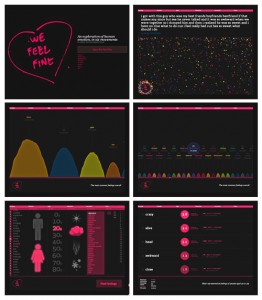What it means to be in a public space, or part of the public or even what constitutes public behaviour are constantly challenged, contested and negotiated. Thompson, 2011, references Hannah Adrent 1958: 50ff, when he states that in the past the public realm could be seen as, “a space of appearance in which things that were said and done could be seen and heard by others as well as by ourselves” p55, and that this meant that the behaviour of individuals was visible by others.
He goes on to ask what it means to be visible now, in an age of new media technologies? Technologies that afford us “mediated visibility” p56, which is “freed from the spatial and temporal properties of the here and now.” ibid. Technology has brought into question our understandings of what it means to be ‘public’, where place, people and behaviour are in a perpetual state of possible flux, interrelated, hybridised and co-produced. Any distinctions between it what it means to be public or private are now a “fluid situation”, where boundaries are “blurred and constantly shifting”, “porous, contestable and subject to constant negotiation and struggle”, Thompson, 2011, p 64. This fluidity is also expressed by Lange, in her 2008, ethnographic study of Youtube.com investigating online behaviour and specifically the “varying degrees of publicness” p361, demonstrated by users.
Many artists and designers are inspired to investigate and question our understanding of what is meant by public and private by utilizing place, audience and technology. Forlano, 2013, concentrates on the opportunities for the co-production of place by making digital media and urban technology visible through art and design, by describing a number of works. Taking up her use of empirical investigation, I present below a number of examples, which I feel highlight negotiations of place, behaviour and technology.
Many works are site-specific making the public space a constituent part of the work and a large number of these of these draw attention to places that we do not consider of any importance until their context is changed or challenged by the installation of an artwork.
Public spaces, such as pedestrian walkways between buildings or underpasses, are often used for installations of light and/or sound. Particularly if they allow for darkened space for projections and interesting acoustics. e.g. ‘Lowlands’ by Susan Philipsz the Turner Art Prize Winner 2010

Strømer, a Dobpler interactive LED wall, 2008
The artist may question, augment or transduce the space through the addition of art. The facades of buildings can become screens for projection mappings and media experiences, which may also include user interaction, like the Dobpler interactive LED wall called ‘Strømer’, installed in a pedestrian tunnel in Oslo in 2008 as part of the European City of Culture.
Some artists/designers/advertisers look specifically at high traffic areas, particularly ones where a potential audience lingers rather than just passing through, therefore may make of use public spaces such as airport terminals, railway concourses and the following work uses the pavement beside a busy road, in Montreal.
21 Balançoires (21 Swings) 2013, from Daily Tous Les Jours on Vimeo is a giant instrument made of 21 musical swings. Swinging triggers different notes so that all the swings together create ‘music’. The designers say that it “stimulates ownership of the public space”, by transforming what was previously an unloved space, into a community space for spending time in, rather than just traversing through.
However, work does not need to be situated in a physical location to comment on the changes to what it means to be public or private. We Feel Fine (2005 – ongoing) is a web-based infographic installation, by Jonathan Harris and Sep Kamvar, a crowd-sourced artwork that, makes use of public networked space to display online comments, which are, “publically private and privately public” Lange, 2008. The site data-mines blogs for comments relating to feelings and collects these along with information about age, gender, geographical location and even the weather conditions when the blog post was written. The original bloggers have not specified that they want their comments to be relocated and republished, however the technology doesn’t require their permission, questioning both the potential for the web to tell peoples stories and the opportunities for others to manipulate this information for their own means.
References
Forlano L. 2013 Making Waves: Urban Technology and the co-production of place in First Monday Vol 18 no 11. http://firstmonday.org/ojs/index.php/fm/article/view/4968/3797 accessed 26/02/14
Lange P. 2008 Publicly Private and Privately Public: Social Networking on YouTube, in Journal of Computer Mediated Communication 13 pp361-380 http://onlinelibrary.wiley.com/doi/10.1111/j.1083-6101.2007.00400.x/pdf accessed 01/03/14
Thompson J. 2011, Shifting Boundaries of Public and Private Life, Theory Culture Society, Vol. 28, pp49-70, http://tcs.sagepub.com/content/28/4/49 Accessed 01/03/14

